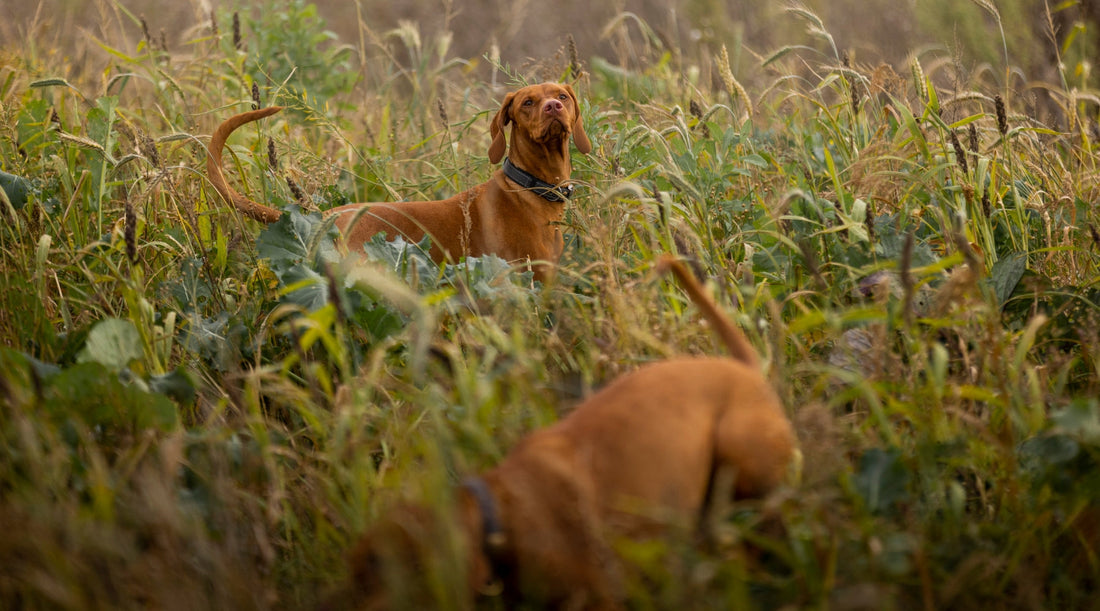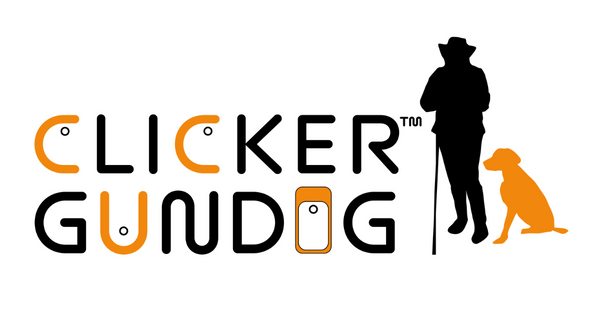
Teaching your gundog the difference between hunting and walking
As the British shoot season draws to a close, many gundog owners find themselves facing an unexpected challenge - they’re suddenly unable to “walk” their dog.
After months of actively encouraging your gundog to use their incredible instincts to find, flush and retrieve game, you’re now asking them to switch gears and enjoy a quiet walk in the countryside.
Pet gundogs, and even experienced working dogs, are not immune from this, and indeed, any dog bred for hunting will always be wired to pursue quarry and follow scent with unwavering determination.
However, for gundogs who have had their first real season out beating or picking up, the transition between hunting and walking can be particularly confusing. And even if you have never struggled to keep them close and focused on you before, you might now be struggling.
If they’ve spent the last few months being actively encouraged to hunt in the open countryside for game (not just in the training field, and not just for dummies or balls), when they come across scent on your daily dog walk, not only will their natural instincts kick in, but there will be a new assumption that this is what you want and expect from them all the time.
Instead of a relaxed stroll, your outings might start to feel like a battle to keep them close and under control and to stop them from disappearing into the hedgerows or darting off to follow scent trails.
In this blog, we’ll unpack the role of your dog’s natural instincts and the concept of “self-employment.” We’ll also show you how to shift their approach from “on the job” to enjoying a more relaxed “bumble” through the countryside.

Why gundog owners find off-lead walks in the countryside a challenge
There is a great deal of debate, conflict and confusion in the gundog world, especially in regards to spaniels, whether you should let your dog run free, off lead in the countryside, irrespective of whether they are a family pet or a working gundog.
That’s because, for our gundog breeds, it is never just ‘a walk’ due to their innate instincts and genetics.
Our retrievers (e.g. labradors and golden retrievers), hunting retrievers (e.g. spaniels) and HPRs (e.g. vizslas, pointers and weimaraners) have been selectively bred for generations to hunt, point, flush, and retrieve game. Dogs with working parents and/or a lot of FTcHs in their pedigree will have more prey drive and hunting instinct.
The countryside, with its wide-open spaces and abundance of wildlife and scent, is a natural trigger for all these hunting instincts, regardless of whether they are pets or workers.
Often, those who selected their puppy with the aim of taking them beating, picking up or rough shooting are aware that the characteristics that prove helpful on a shoot day can also pose problems on the daily dog walk if not carefully managed.
And while you might have carefully managed these instincts successfully so far, it can be difficult to get your gundog back on track after their first shoot season, when they have made the powerful connection between scent and thrill of flushing or retrieving.

What is controlled hunting?
As inconvenient as it might be if you’re just trying to go for a peaceful dog walk, hunting cannot be extinguished from your gundog between February and October and reignited for the shooting season.
It is part of their DNA and although you may be tempted to try and suppress it when it becomes inconvenient, you’ll likely find that it sneaks up on you when you least expect it.
In an ideal world, your gundog should see the hunt as purposeful. It should create excitement and have a specific outcome. While it is instinctive, it can be trained using cues and should be controlled and directed by the handler.
If you’ve been involved in gundog training with your pet or working dog, it’s likely that you’ve already introduced the concept of “controlled hunting” to your dog and will have probably taught a turn whistle, a hunt there cue, and, depending on breed, a basic quartering pattern.
However, environmental cues also play a big role. And while your hunting environment might previously have been your training field, after their first shooting season, our gundogs can quickly switch on to cues in the countryside that lead them to start going off “self-employed”.

What is a self-hunting or self-employed gundog?
A "self-hunting" or "self-employed" gundog refers to a dog that wants to work independently of its handler. You might be headed out the door on a relaxing country walk, but they’re getting ready to hunt and flush game without taking any instructions from you.
You might previously have worked hard to help your gundog understand that it is more valuable to ‘hunt’ with you than by themselves. Searching games are a great way to allow your gundog to use its natural abilities in a constructive and controlled way and will, over time, reduce their desire to ‘self-hunt’.
However, if you have been working with your dog during the shooting season, months of encouraging them to think independently and do whatever it takes to find game can backfire.
The result might be a relapse in their understanding of what cues hunting and the creation of a dog that wants to ‘self-hunt’ every time you venture out into the real world.

What is going for a bumble?
The best ‘walk’ you will ever have with your gundog is where you set off together and never have to recall, stop, or attach the lead.
You are entirely in sync with each other, your dog is not off self-hunting, nor are you having to do controlled hunting exercises with them all the time, and you end the walk together.
The key to creating this successful ‘walk’ with your gundog is what we call bumbling.
The definition of bumble is: “to act or move in a way that is not smooth or steady or showing clear thought”.
Unlike going out on a walk, which can unintentionally come across to our dogs as purposeful (like hunting), the art of bumbling is all about zig-zags and circles and taking breaks along the way.
You decide which way to go, and your dog learns to look to you for direction. It should feel very different from training or work, and the only thing your dog needs to understand is that you are in control of the route and the pace.
Instead of nagging your dog to be glued to your leg, or continuously recalling them because they’ve suddenly gone off hunting by themselves, you need to learn to recognise the changes in your dog that indicate when they are going to get overstimulated or cued to hunt by the environment.
By practice and observation, you can begin to identify the environmental triggers in your dog and gauge at what point to interrupt them and at what point it's safe to continue on your bumble.
If you are suddenly struggling with a dog that just wants to hunt now that the season is over, you need to be on the lookout for what is triggering this. Keep an eye on their body language and start to predict when they are about to “go self-employed” and instead of continuing on your walk, dedicate time to doing nothing.
The art of taking a break is especially important for our post-shoot season working dogs, as hanging around is something that clearly distinguishes your walk or bumble from an intense working shoot day.
Even if your dog is not about to go off hunting, you should take regular pauses on the walk. Stop to enjoy the view, rest on a gate, sit on a stile, catch up with messages on your phone, or even just sit in the middle of the field.
Remember that going for a bumble or ‘walk’ is for the dog as much as it is for us. It’s not just about exercise so you could spend half an hour in the same area taking in information and be quite happy.
If you want to learn more and do some practical real-world bumbling with your gundog, we are hosting a special Going for a Bumble workshop and summer camp.
By the end of it your gundog will know the difference between ‘going for a walk’ and ‘going hunting’ in the same stimulating countryside environment that they might have spent the shoot season in.
For more information about the workshop, taking place from 15th to 16th March 2025 click here: clickergundog.co.uk/products/going-for-a-bumble-workshop
For more information about the camp, taking place from 14th to 16th August 2025 click here: clickergundog.co.uk/products/going-for-a-bumble-camp
📸 Photograph credit Alice Loder Photography
